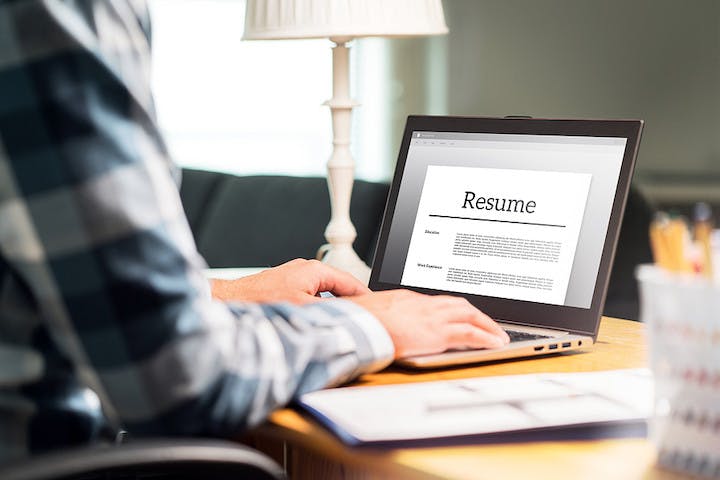When economists become more or less unequivocal about the inevitability of one main thing: recession [Bank of America most recently declared there was a 40% likelihood of one next year], then it’s probably time to sit up and listen to what they have to say.
According to analysts the shadow of recession is being cast by a combination of things, including continuing supply-chain problems and war in Ukraine. But it’s mostly the Federal Reserve’s efforts to tamp down inflation that are now inching us towards negative growth over the next 12 months. Just recently, The Fed has started raising interest rates sharply, the most recent of which being an increase of 0.75%. But more is predicted to come before year-end.
A cooling economy typically means a cooling labor market
It’s relatively simple why The Fed is doing what it’s doing. Raising interest rates makes credit more expensive, meaning those that can’t afford (or choose not) to make higher payments are forced to delay projects that require funding. It also reduces the money supply by encouraging people to save money to earn higher interest payments. By reducing the supply of money in circulation, theory has it that inflation falls, and the economy cools.
The trouble with this approach is that it almost always produces a recession and a cooling of the labour market too – creating higher unemployment. It happened in 1981, when a similar strategy brought inflation under control but caused unemployment to skyrocket to 11%.
Can mass unemployment be avoided?
The key question is this: Can following the same policies actually create a different outcome this time round?
The Fed certainly seems to think so. It claims it can engineer more of a “soft landing”, i.e., with only a mild recession and minimal impact on unemployment.
It believes in this because the current labor market is such that there are about two open jobs for each unemployed worker in the labor force. An assumption being made is that the labor market is significantly tighter than what the unemployment rate shows, with job opening and quit rates corresponding to a labor market with less than 2% unemployment. Another assumption is that wages have been rising at a much faster pace and are predicted to continue doing so until at least year-end.
The Fed’s plan is to cool the economy by reducing the number of job openings. The thinking goes that too many open jobs are forcing employers to keep raising wages, which get passed on to consumers in the form of higher prices. If all goes as planned, then few will lose their jobs and the pace of wage growth will slow.
BUT….history is against the plan working
The problem with this approach is that the historical record for it working isn’t encouraging.
The fact of the matter is that since 1955, there has never been a quarter with inflation above 5% and unemployment below 5% that was not followed by a recession within the next two years.
The Fed’s rate increases may be inadequate to bring inflation under control. When inflation last reached such levels in 1980, interest rates had to exceed inflation before they started to work as desired. Economists expect the Fed’s interest rate hikes to reach about 3.5% by year-end, but with inflation at 8.6% – and that may not be enough.
So…by how much will unemployment rise?
Forecasts for unemployment have the rate increasing from 3.6% in May to an average of 3.7% by the end of 2022 and 4.2% by the end of 2023. However, if the labor market returns to its 2019 levels – when there was a smaller imbalance between available workers and jobs – then unemployment would rise to about 6%.
Research suggests The Fed’s attempts to reduce the number of job openings will raise unemployment to more than 6%. But that does not guarantee inflation will reduce enough to reach the Fed’s target of 2%.
The historical record shows that inflation is heavily driven by the expectations workers have for price increases. If those are not lowered they will continue to demand increased wages and consequently keep costs rising for employers. And surveys show consumers expect inflation to keep rising.
It’s also difficult to understand why raising interest rates will not result in job losses from layoffs. A majority of the jobs created in the economy are by small businesses. These are the ones most in need of credit and most likely to be adversely affected by an increase in costs caused by rising rates.
A soft landing?
The economy, and the labor market may yet escape the worst. Unlike in 1981, The Fed is acting faster. Back then inflation had been rising for more than a decade by the time The Fed started raising rates. Inflation expectations had become well entrenched. Businesses and consumers expected prices to keep rising and acted accordingly. And unemployment today, while still high at 8.6%, is well below the level reached in 1980 of 14.6%.
But the most likely scenario is that inflation will moderate and unemployment will rise.
Moreover, The Fed’s inflation target is 2% but consumers expect inflation to fall only to about 5%.
Reducing the money supply is one way to try and reduce inflation, but it also helps to grow the economy. Inflation is caused by too much money chasing too few goods. People buy more goods when they see fewer opportunities to invest their money. In a growing economy people choose to put more of their money into businesses, which lowers demand for goods and reduces inflation.
In the 1980s the Administration had a strategy of tightening the money supply and promoting economic growth by reducing regulatory barriers and lowering tax rates. Inflation disappeared and the economy took off. There’s little to suggest that anyone’s thinking in those terms today.
